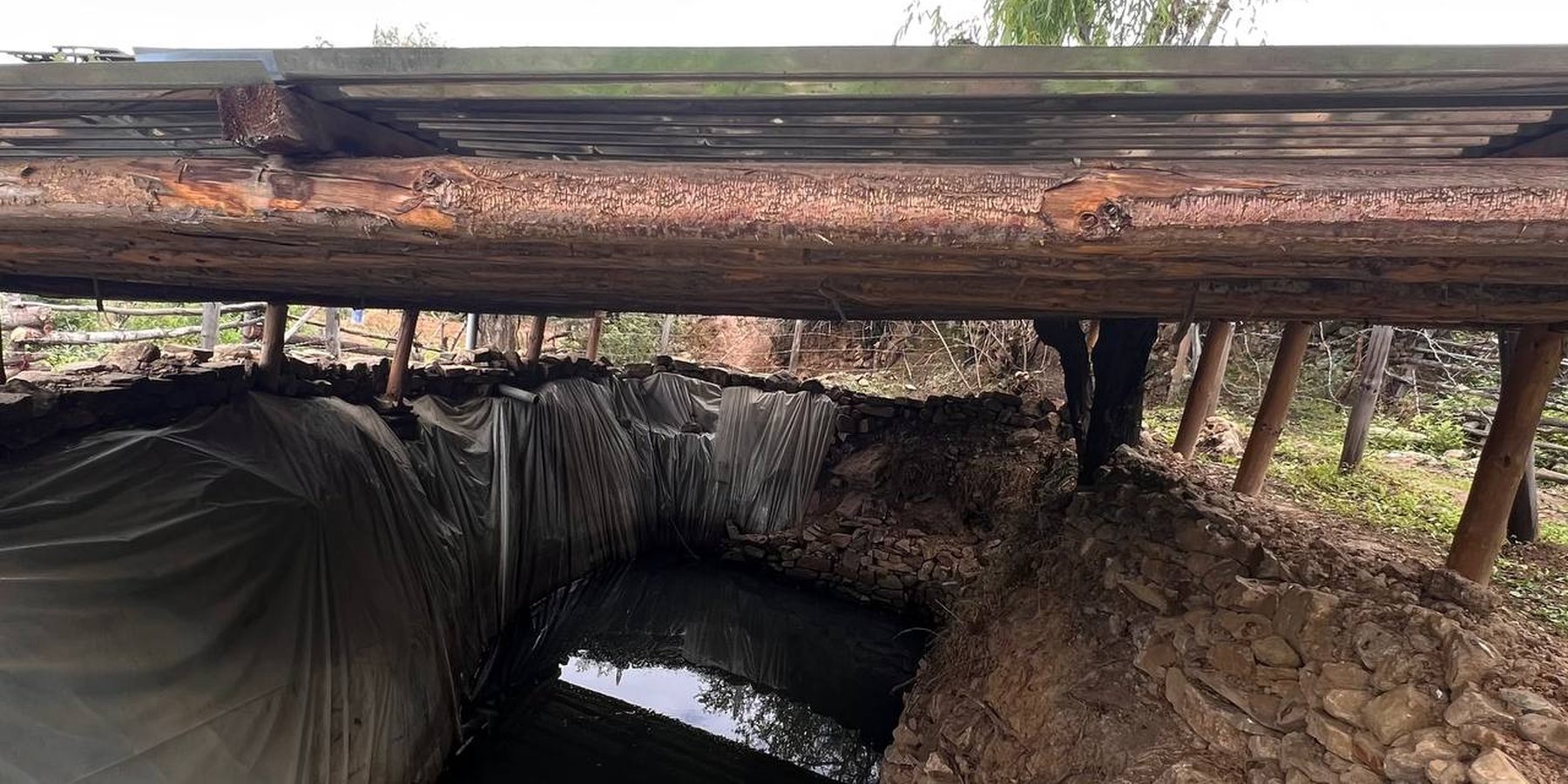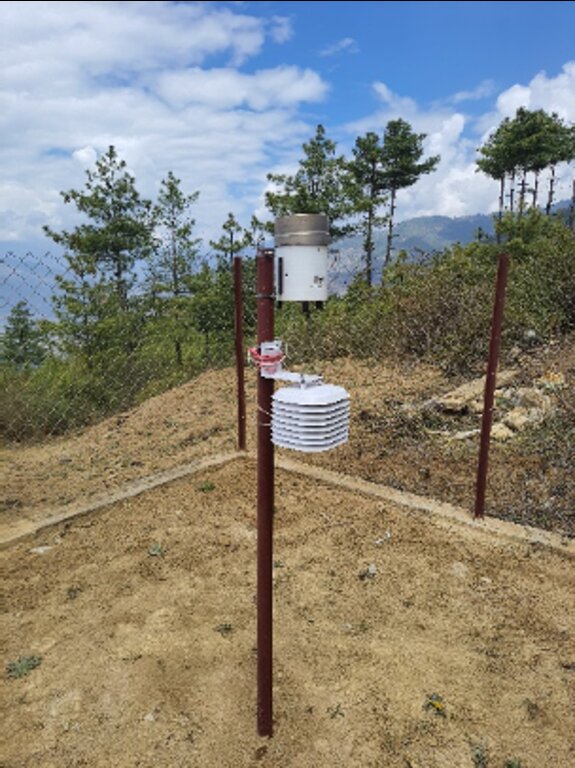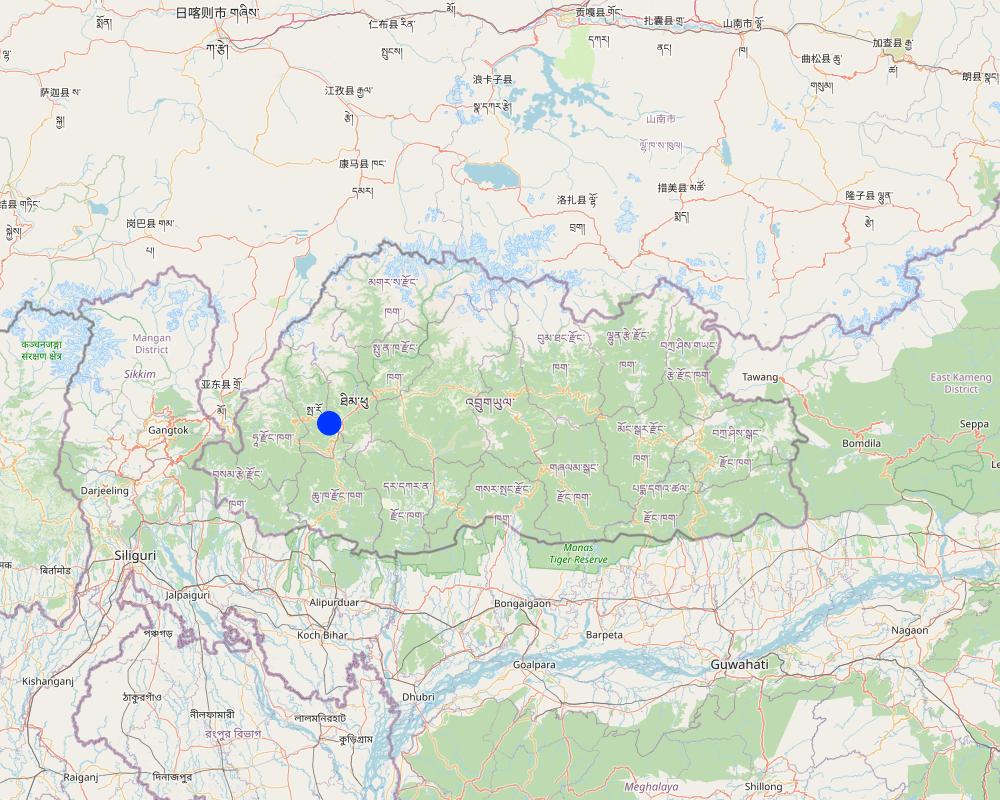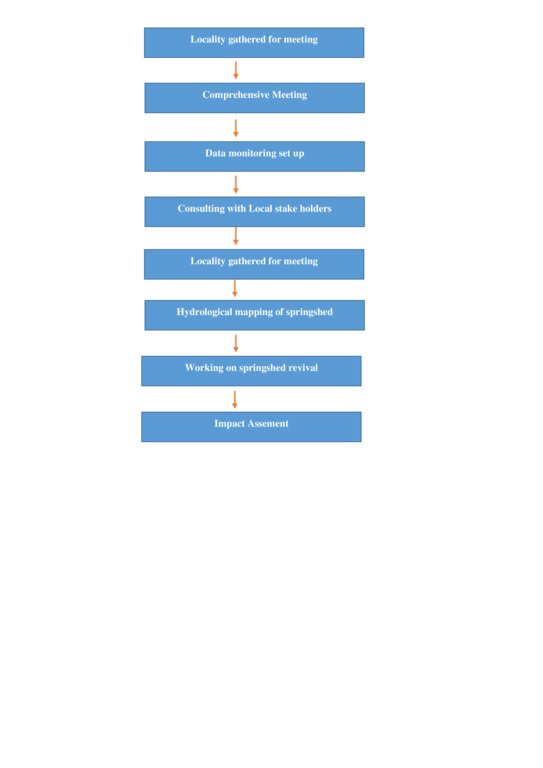Nature-based Solutions for Springshed Revival [不丹]
- 创建:
- 更新:
- 编制者: Karma Wangdi
- 编辑者: Haka Drukpa
- 审查者: Rima Mekdaschi Studer, William Critchley
Rangzhin Thablam Thok Chhuka Sakhong Nyamsuung (རང་བཞིན་ཐབས་ལམ་ཐོག་ཆུ་རྐ་ས་ཁོངས་ཉམས་སྲུང་།)
approaches_6850 - 不丹
查看章节
全部展开 全部收起1. 一般信息
1.2 参与方法评估和文件编制的资源人员和机构的联系方式
关键资源人员
土地使用者:
Dorji Gem
n/a
Lholing, Shaba Gewog (Block), Paro Dzongkhag (District)
不丹
土地使用者:
Chencho Chencho
n/a
Lholing, Shaba Gewog (Block), Paro Dzongkhag (District)
不丹
土地使用者:
Dorji Chencho
n/a
Lholing, Shaba Gewog (Block), Paro Dzongkhag (District)
不丹
土地使用者:
Nidup Wangmo
n/a
Lholing, Shaba Gewog (Block), Paro Dzongkhag (District)
不丹
有助于对方法进行记录/评估的项目名称(如相关)
Strengthening national-level institutional and professional capacities of country Parties towards enhanced UNCCD monitoring and reporting – GEF 7 EA Umbrella II (GEF 7 UNCCD Enabling Activities_Umbrella II)有助于对方法进行记录/评估的机构名称(如相关)
National Soil Services Center, Department of Agric (National Soil Services Center, Department of Agric) - 不丹1.3 关于使用通过WOCAT记录的数据的条件
(现场)数据是什么时候汇编的?:
12/07/2023
编制者和关键资源人员接受有关使用通过WOCAT记录数据的条件。:
是
2. SLM方法的描述
2.1 该方法的简要说明
Springshed revival can be achieved through Nature-based Solutions (NbS) with a hydrogeological approach, complemented by socio-ecological inputs, and engineering surveys.
2.2 该方法的详细说明
该方法的详细说明:
Springs are natural occurrences where fresh water emerges from the ground through openings known as spring vents. They are outlets from aquifers, water-bearing layers underground, to the surface. The water in springs originates from rainfall during specific seasons, which falls on the springshed, infiltrates the ground and is collected as groundwater. When the groundwater is pressurized and rises, it creates springs, which then contribute to the flow of water into rivers or other water bodies. In mountainous regions like Bhutan, springs serve as the primary water source for rural households (ICIMOD, 2021).
Spring revival through “nature-based solutions” (NbS) in springsheds refers to a comprehensive effort aimed at reviving and restoring the functionality of springs. The primary objectives of spring revival initiatives include ensuring sustainable water supply, mitigating the threat of springs drying, conserving biodiversity, and improving the livelihoods of communities dependent on spring water. To achieve these goals, diverse methods are employed, involving various stakeholders. While spring revival offers numerous advantages, it also presents certain disadvantages that should be considered (Konek & Samanta, 2022).
The methods used under NbS to revive springs are multifaceted and typically involve a combination of hydrogeological, ecological, hydrological, and community-based approaches. Hydrogeology can lead to a better understanding of aquifers and the nature of springs and springsheds, thus providing ways for better management. Ecological methods focus on restoring the natural catchment area (the springshed itself) and improving vegetation cover to enhance water infiltration and recharge. Measures such as reforestation, contour trenching, and check dams are implemented to reduce erosion, promote groundwater recharge, and maintain spring flow. Hydrological interventions include the construction of recharge structures, groundwater recharge pits, and percolation tanks to replenish the aquifer and ensure sustained spring flow. Community-based approaches encompass raising awareness, capacity building, and participation in springshed conservation and management activities. These efforts often include the establishment of user groups, water committees, and the adoption of sustainable water use practices (Shrestha et al., 2017).
Stakeholders play vital roles in spring revival initiatives. Local communities living in Lholing areas are key stakeholders as they are directly affected by water availability and are actively involved in the preservation and management of springs. Government agencies such as the Department of Water, Department of Forests and Park Services and Gewog Administration provide technical expertise, funding, and policy support. Academic institutions and research organizations contribute scientific knowledge, monitoring, and evaluation, while international agencies and donor organizations may provide financial assistance and expertise.
According to Tamba et al. (2012) the advantages of spring revival are significant and far-reaching. By restoring spring flow, communities get access to a reliable and sustainable water source, which is crucial for their domestic, agricultural, and livestock needs. Spring revival through NbS also contributes to biodiversity conservation, as the presence of flowing water supports diverse aquatic and terrestrial ecosystems, including endemic species. Moreover, the revival of springs enhances groundwater recharge, which can benefit other water sources in the area. The community involvement and capacity-building aspects of NbS initiatives foster social cohesion, empowerment, and the development of local governance structures. Revived springs have the potential to enhance community resilience to climate change by providing water during periods of drought or erratic rainfall.
However, NbS also come with certain challenges and disadvantages. Adequate financial resources and long-term funding commitments are often required, which can pose a challenge in resource-constrained settings. Technical expertise and knowledge gaps may hinder the effectiveness of revival methods, emphasizing the need for capacity building and technical support. The involvement of multiple stakeholders can lead to coordination issues and conflicts of interest. Furthermore, the success of spring revival initiatives relies heavily on community participation. Thus, lack of community engagement or ownership can hinder sustainability. Environmental and social impacts need to be carefully considered, as inappropriate interventions or changes in hydrological patterns can have unintended consequences on ecosystems and communities (Khadka et al., 2019).
2.3 该方法的照片
2.4 该方法的视频
日期:
12/07/2023
2.5 采用该方法的国家/地区/地点
国家:
不丹
区域/州/省:
Shaba, Paro
有关地点的进一步说明:
Lholing Chiwog, Shaba Geog, Paro Dzongkhag
Map
×2.6 该方法的开始和终止日期
注明开始年份:
2018
若不知道准确的年份,请注明该方法的大致开始日期。:
不到10年前(最近)
2.7 方法的类型
- 基于项目/方案
2.8 该方法的主要目的/目标
Nature-based solution to reviving springs as a source of water for:
1. Drinking
2. For animal use
3. Agriculture
2.9 推动或妨碍实施本办法所适用的技术的条件
社会/文化/宗教规范和价值观
- 启动
Water became the source of whole existence.
财务资源和服务的可用性/可得性
- 启动
This type of project can be brought into action with the help of continued implementation of activities and grants
机构设置
- 启动
More stakeholders
参与者的的协作/协调
- 启动
法律框架(土地使用权、土地和水使用权)
- 启动
Water Act of Bhutan 2010
政策
- 启动
Drinking water has been a priority over other usage as per our Act and policies.
土地治理(决策、实施和执行)
- 启动
The Department of Water and Department of Forests and Park Services have been promoting conservation and management of water resources.
了解SLM,获得技术支持
- 阻碍
Our farmers usually lacks the knowledge on SLM principle left without assisting in this type of field.
市场(购买投入,销售产品)和价格
- 启动
The communities have access to local markets to sell their agricultural products.
工作量、人力资源可用性
- 阻碍
Required huge labour contributions. Labour shortage is a problem
其他
- 启动
3. 相关利益相关者的参与和角色
3.1 该方法涉及的利益相关者及其职责
- 当地土地使用者/当地社区
A total of 8 stakeholders were involved, only two of them are directly assisting in spring revival
Helped as a labor who have contributed in making trenches and fencing around the shed.
- SLM专家/农业顾问
8 Foresters from the Divisional Forest Office, Paro were involved
Planning, coordinating and providing technical assistance for the spring revival
- 地方政府
Gup (Local Chief) and Tshogpa of Shaba Gewog Administration.
Administrative support
- 国家政府(规划者、决策者)
Department of Forests and Park Services
Provide technical support
- 国际组织
Green Climate Fund, ICIMOD
Provide funding support and tecnnical expertise
3.2 当地土地使用者/当地社区参与该方法的不同阶段
| 当地土地使用者/当地社区的参与 | 指定参与人员并描述活动 | |
|---|---|---|
| 启动/动机 | 互动 | A person from each household was involved in the initial planning and meeting with the specialists to agree to. |
| 计划 | 被动 | The plannings were mostly done by specialists from the forest department. |
| 实施 | 外部支持 | Land users/local community were engaged as paid labours. |
| 监测/评估 | 互动 | Twice a year monitoring is done by the specialists and other minor monitoring is dine by the community around the springsheds. |
| 无 | No research was carried out. |
3.3 流程图(如可用)
具体说明:
1. Comprehensive mapping of springs and springsheds.
2. Setting up of a data monitoring system.
3. Understanding socio-economic and governance systems of springs.
4. Hydrogeological mapping.
5. Creating a conceptual hydrogeological layout of the springshed.
6. Classification of spring type, identifying mountain aquifer and demarcating recharge area.
7. Developing springshed management and governance protocols and
8. Impact assessment.
作者:
Singye Dorji & Tshering Gyeltshen
3.4 有关SLM技术选择的决策
具体说明谁有权决定选择要实施的技术:
- 主要是SLM专家,咨询土地使用者之后
4. 技术支持、能力建设和知识管理
4.1 能力建设/培训
是否为土地使用者/其他利益相关者提供培训?:
否
4.2 咨询服务
土地使用者有权使用咨询服务吗?:
是
指明是否提供了咨询服务:
- 在土地使用者的土地上
4.3 机构强化(组织发展)
是否通过这种方法建立或加强了机构?:
- 是,少许
具体说明机构的强化或建立程度:
- 本地
4.4 监测和评估
监测和评估是该方法的一部分吗?:
是
注释:
Physical on site monitoring and evaluating the springshed
若是,该文件是否用于监测和评估?:
否
4.5 研究
研究是该方法的一部分吗?
否
5. 融资和外部物质支持
5.1 该方法中SLM组成部分的年度预算
如果不知道准确的年度预算,请给出一个范围:
- < 2,000
注释(例如主要的资助来源/主要捐助者):
Royal Government of Bhutan funding was released under Ministry of Energy and Natural Resources (erstwhile Ministry of Agriculture and Forests).
5.2 为土地使用者提供财政/物质支援
土地使用者是否获得实施该技术的财政/物质支持?:
是
如果是,请具体说明支持的类型、条件和提供者:
The government fully funded the initiative of springshed revival where they even paid N. 700 to the labour helpers that from the community engaged.
5.3 对特定投入的补贴(包括劳动力)
- 劳动力
| 程度如何 | 对补贴做出具体说明 |
|---|---|
| 充分融资 | Paid for the local labourers and also 4 technicals staffs from Department of Forest and Park Services. |
- 设备
| 具体说明哪些投入得到了补贴 | 程度如何 | 对补贴做出具体说明 |
|---|---|---|
| 机械 | 充分融资 | One Excavator untill the completion of the project. |
| 工具 | 充分融资 | Basic tools such as spades, crowbars and shovel. |
| 充分融资 | Lunch and refreshments for all the labourers. | |
- 建筑
| 具体说明哪些投入得到了补贴 | 程度如何 | 对补贴做出具体说明 |
|---|---|---|
| Barbed Wire Fence. | 充分融资 | For a few bigger springsheds. |
如果土地使用者的劳动力是一项重要的投入,那么是不是:
- 以现金支付
注释:
The labour by land users were paid Nu. 700 per day with free lunch and refreshments.
5.4 信用
是否根据SLM活动的方法给予信用值?:
否
5.5 其它激励或手段
是否有其他激励措施或工具用于促进SLM技术的实施?:
否
6. 影响分析和结论性陈述
6.1 方法的影响
该方法是否有助于当地土地使用者,提高利益相关者的参与度?:
- 否
- 是,很少
- 是,中等
- 是,支持力度很大
The approach helped local land users understand about some basic Knowledges in springshed management and maintenance.
这种方法是否有助于基于证据的决策?:
- 否
- 是,很少
- 是,中等
- 是,支持力度很大
Yes the decisions made were always discussed and consulted together.
该方法是否帮助土地使用者实施和维护SLM技术?:
- 否
- 是,很少
- 是,中等
- 是,支持力度很大
The approach lead to the implementation of important SLM Technologies which involved water storage, check dams and benchmark preparations
该方法是否提高了土地使用者实施土地管理的知识和能力?:
- 否
- 是,很少
- 是,中等
- 是,支持力度很大
Yes in this springshed revival (nature-based solution)
该方法是否提高了其他利益相关者的知识和能力?:
- 否
- 是,很少
- 是,中等
- 是,支持力度很大
Yes this approach lead to the improvement of knowledge about ground water and springs.
该方法是否建立/加强了机构、利益相关者之间的合作?:
- 否
- 是,很少
- 是,中等
- 是,支持力度很大
Yes, it helped/enhanced the cooperation and systematic use of the spring water for various uses for washing and cattle feeding.
该方法是否缓解了冲突?:
- 否
- 是,很少
- 是,中等
- 是,支持力度很大
In the past people had recurring conflicts with regard to use and division of the small water source. After this approach with the implementation of systematic use of water from the springshed conflicts among land users are greatly reduced.
该方法是否鼓励年轻人/下一代土地使用者参与SLM?:
- 否
- 是,很少
- 是,中等
- 是,支持力度很大
The springshed revival of Lholing encouraged few young people to stay back at home with their parents to work in the farms, now that they are able to get some amount of irrigation water from the springsheds that are revived.
该方法是否改善了粮食安全/改善了营养?:
- 否
- 是,很少
- 是,中等
- 是,支持力度很大
The approach of springshed revival helped improve food security to some extent as the approach encouraged the land users to establish kitchen gardens where irrigation was done from the spring water that were revived and created.
该方法是否改善了供水和卫生条件?:
- 否
- 是,很少
- 是,中等
- 是,支持力度很大
It definitely improved sanitation as they used spring water for bathing and laundry purposes.
该方法是否会带来就业、收入机会?:
- 否
- 是,很少
- 是,中等
- 是,支持力度很大
Yes a little through farming activities.
6.2 土地使用者实施SLM的主要动机
- 增加生产
In case of farm products.
- 增加利润(能力),提高成本效益比
- 环境意识
The springsheds not only provides drinking water fir the domestic animals but for some of wild animals such as deer.
- 提高SLM知识和技能
Local land users understood the importance of SLM and springshed maintenance.
- 冲突缓解
The different spring sheds offered various sources of spring water reducing conflict related to equal use of irrigation for the paddy.
6.3 方法活动的可持续性
土地使用者能否维持通过该方法实施的措施(无外部支持的情况下)?:
- 是
若是,请说明如何维持:
Now that the springsheds are revived, the local land users with some basic knowledge could do necessary maintenance and protection of these vital area.
6.4 该方法的长处/优点
| 土地使用者眼中的长处/优势/机会 |
|---|
| Provides a source of drinking water for wild animals. |
| Provides drinking water source for the domestic animals |
| Improved sanitation through constant supply of spring water. |
| 编制者或其他关键资源人员认为的长处/优势/机会 |
|---|
| Increased source of irrigation water from different spring-shed. |
| Balanced ecological management of water resources. |
| Catchment area created as springshed could prevent splash and rill erosions. |
6.5 该方法的弱点/缺点以及克服它们的方法
| 土地使用者认为的弱点/缺点/风险 | 如何克服它们? |
|---|---|
| Attracts wild animals to the nearby field which come to drink water from the springsheds. | Improved fencing of the fields |
| 编制者或其他关键资源人员认为的弱点/缺点/风险 | 如何克服它们? |
|---|---|
| Artificial creating of some of springshed lead to loss of pasture lands | |
| Risk of cattle/ children drowning in the bigger spring-sheds | Fencing around the springshed. |
7. 参考和链接
7.1 方法/信息来源
- 实地考察、实地调查
There were three numbers of informants. The Ranger and agriculture extension supervisor of Shaba Geog and a progressive farmer from Lholing.
7.2 参考可用出版物
标题、作者、年份、ISBN:
ICIMOD. (2021). Springshed revival and management Implement gender-responsive interventions around spring revival and management in the HKH and influence policy uptake
可以从哪里获得?成本如何?
Websites (Free)
标题、作者、年份、ISBN:
Tambe et al. (2012). Reviving Dying Springs: Climate Change Adaptation Experiments From the Sikkim Himalaya.
可以从哪里获得?成本如何?
Google Scholar
标题、作者、年份、ISBN:
Shrestha et al. (2017). Application of Eight-step Methodology for Reviving Springs and Improving Springshed Management in the Mid-hills of Nepal.
可以从哪里获得?成本如何?
Google Scholar
标题、作者、年份、ISBN:
Khadka et al. (2019). Integrated River System Resource Management Planning: A Stepping Stone for Sustainable Conservation of Chure-TaraiMadhesh Landscape
可以从哪里获得?成本如何?
Google Scholar
标题、作者、年份、ISBN:
Koner, K. & Samanta, G. (2022). Reviving traditional water sources for resilient water future: case of Darjeeling City, India.
可以从哪里获得?成本如何?
Springer
7.3 链接到网络上可用的相关信息
标题/说明:
Springshed revival and management Implement gender-responsive interventions around spring revival and management in the HKH and influence policy uptake.
URL:
https://www.icimod.org/initiative/rms/springshed-revival-and-management/
标题/说明:
Reviving Dying Springs: Climate Change Adaptation Experiments From the Sikkim Himalaya.
URL:
https://doi.org/10.1659/MRD-JOURNAL-D-11-00079.1
标题/说明:
Application of Eight-step Methodology for Reviving Springs and Improving Springshed Management in the Mid-hills of Nepal.
URL:
https://cgspace.cgiar.org/handle/10568/90596
标题/说明:
Integrated River System Resource Management Planning: A Stepping Stone for Sustainable Conservation of Chure-TaraiMadhesh Landscape
URL:
https://nast.gov.np/documentfile/Proceedings.pdf#page=18
标题/说明:
Reviving traditional water sources for resilient water future: case of Darjeeling City, India.
URL:
https://link.springer.com/article/10.1007/s10708-021-10444-z
链接和模块
全部展开 全部收起链接
无链接
模块
无模块







